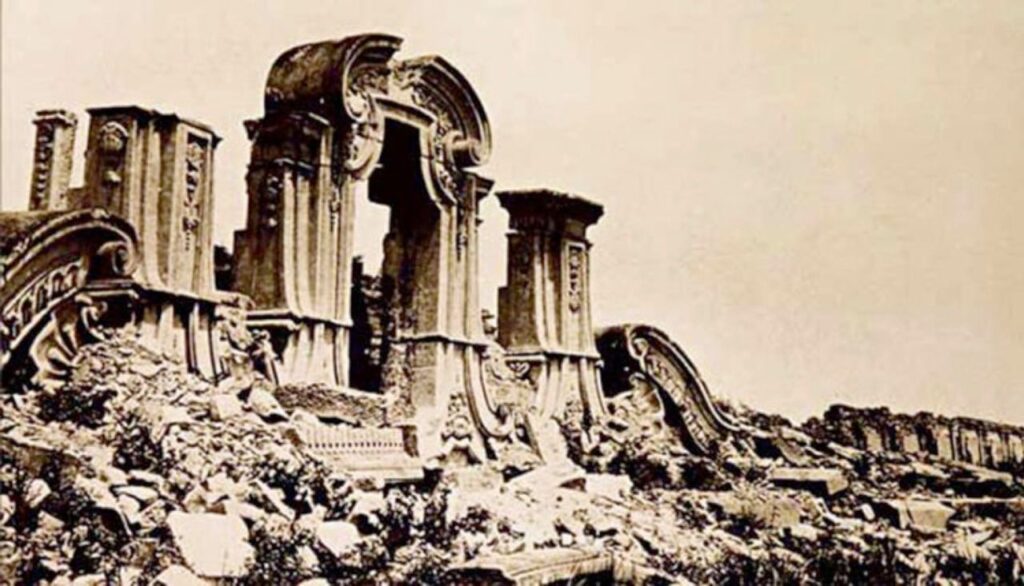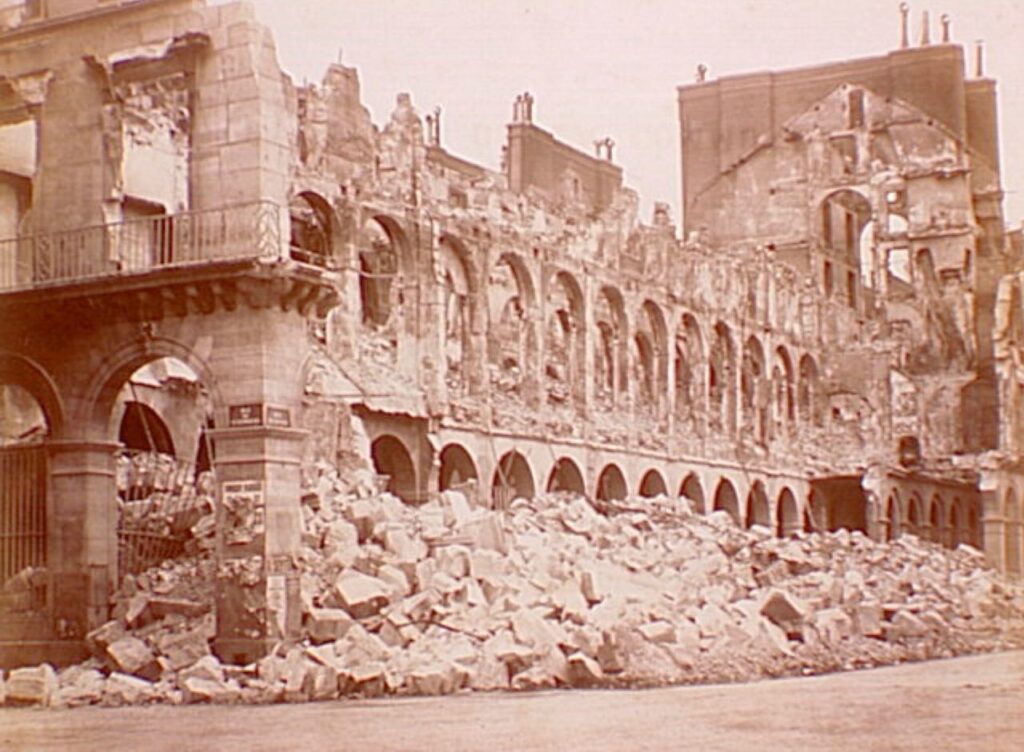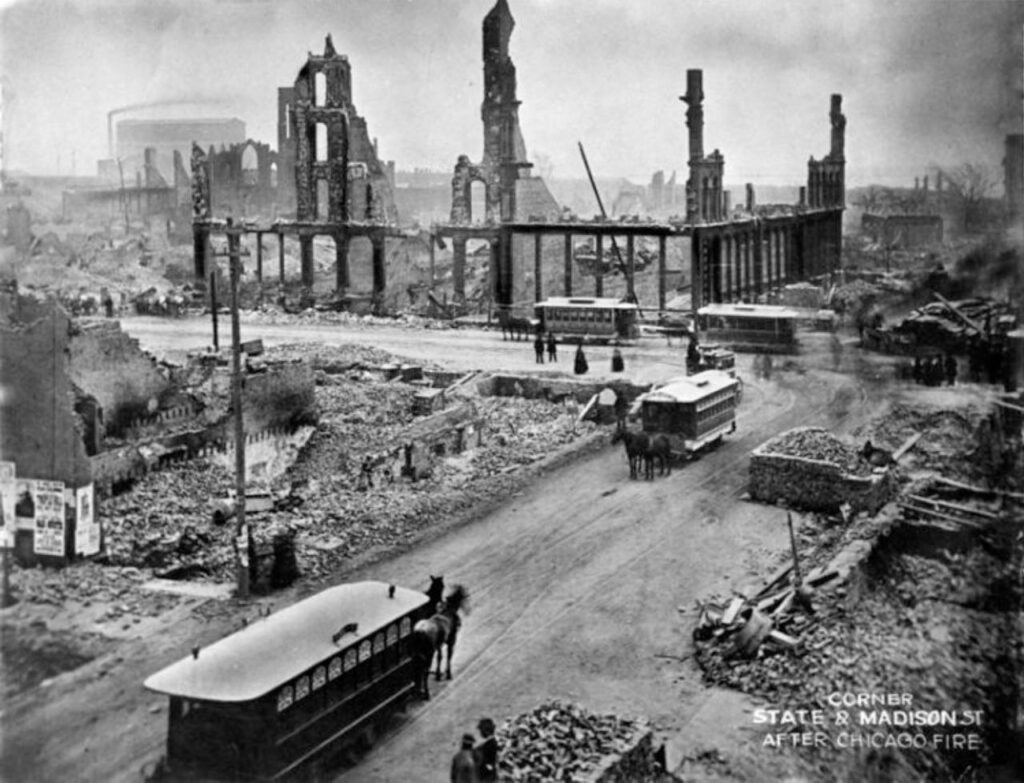For years now I have been dealing with a research which, as it progresses, is proving to be increasingly exciting and increasingly connected to the events we have witnessed in recent history and above all in the current one. I have already dealt with, in other forums and in other contexts, the many questions concerning the enigma of the so-called “Great Tartaria”, but, to start doing it here too, I have chosen to use the passage of a text, which I painstakingly revised and corrected (being originally in Russian, which I obviously don’t know). In my opinion it is particularly suitable for introducing the topic in question. I hope you’ll find it as interesting as I did… happy reading!
Tom Bosco
If we consider historical events in connection with each other, as a whole, it is impossible not to detect some global processes that cannot be identified through a fragmentary study. As a result, events that took place in different countries and on different continents, during certain historical periods, have direct and indirect connections. That allows for a completely new assessment of the essence and the background of many such processes. Thus, the mid-nineteenth century begins to appear as a clear turning point in world history. The loss of Europe[1] in the so-called “Crimean” war entailed a whole chain of global changes that were not apparent even to eyewitnesses of these changes. The fact is that, in reality, the big picture as a whole can only be seen by observing it from afar.
Now that enough time has passed, we can finally piece together from the fragments a single picture of events that took place over the course of several generations. For the representatives of these generations certain changes were simply not visible.
In the first place, what attracts attention is the absolutely amazing similarity of events and phenomena around the world, and this cannot be a coincidence.
Sociology is an exact science and no one can delete the laws of the development of society. If a critical mass of those with nothing to lose accumulates in a society, then a revolution becomes inevitable. No one will dare to doubt this, just as they will not doubt that if there are more military personnel than those they support, then this means that there will be a war. And if we, considering the architecture of cities in the middle of the 19th century, apparently cannot distinguish in which city, country and even on which continent this or that building was located. This can only mean one thing – the world was globalized.
Even in the absence of modern means of information transmission, absolutely identical cities have arisen in some incomprehensible way in Africa, Europe, Canada, the United States, Paraguay, Chile, Brazil, Australia, India, Japan, China, Southeast Asia and the Russian Empire. At first glance it may seem that this is simply a single architectural style that has spread throughout the world thanks to banal exchange and imitation. However, upon closer inspection, completely inexplicable facts are revealed. Some architectural elements of buildings and structures in different parts of the world are not just similar, but absolutely identical. Sometimes they correspond to the millimeter, as if they were printed by a 3D printer, or cast into the same standardized shapes.

Identical capitals in New York and St. Petersburg
And the explanations of some historians saying that this is some kind of a “colonial” architectural style that spread throughout the world together with the colonialists who brought civilization to the “savage” peoples are clearly untenable. The bottom line is that it’s one thing when the natives try to copy a palace on their island, which one of the tribesmen saw after visiting distant countries inhabited only by whites. It is quite another matter when the quality of the structures is absolutely everywhere at the highest level, and many elements of the buildings leave no doubt that they were built to uniform standards. If we assume that all “colonial” cities were built by newcomers from the Old World, then we have to admit that they were designed in the same institute.
In addition, hundreds of thousands of skilled workers, foremen and engineers were needed for such large-scale construction projects, but where could they come from, for example in Australia? Did the British teach the necessary skills to the natives? Or were tens of thousands of top-level trained specialists brought there by ships? Obviously not. Apparently, the level of technology and standards were the same all over the world. Chinese cities were no different from European ones and all others, and they looked exactly like St. Petersburg, London or Washington. At that time, the imperial style dominated, which is now officially called “Empire”, apparently so that no one would guess.

Ruins of the Yuanminguan Palace in China.
Destroyed in 1860 by Anglo-French troops during the Second Opium War.
The very name of this architectural style contains the answer to the question why there were no national architectural features. Because the empire was planetary, and it wasn’t Britain at all. The answer to the question of where the center of its capital was can be surprisingly simple: there where the center of geographical coordinates was, and this is predictable and logical. It remains only to remember at which point the prime meridian was. The zero meridian was, at that time, the Pulkovo meridian. So, it turns out that the center of the world until the middle of the 19th century was St. Petersburg. To understand where the new center of the global world empire is, it is enough to know where the zero meridian is, as well as other symbols of the supreme power, such as a scepter, an orb and a crown with the purest of the largest diamonds.
How could a small island state, where criminals and other anti-social elements had been exiled in previous centuries, become a metropolis? The answer to this question, as is often the case, lies in the question itself. Here it is necessary to touch on a very delicate topic, very painfully perceived, first of all, by the British themselves, who firmly believe in the antiquity and unity of their “nation”. In none of the official sources will you find any mention that the “Misty Albion” in the past was an ordinary penal colony, a natural prison that does not require funding and has no staff and guards.
But through indirect signals, and following the common sense, I convinced myself that this version has a right to exist. You see, we also know the eastern analogue of Britain: Sakhalin; and this fact is fully within the laws of sociology. Always in any moment, a certain stratum of society will surely belong to members with a criminal conscience. In any society, the most spiritual and enlightened, there is always a certain percentage of those who need to be isolated for the sake of the safety of the whole community.
Sociology is an exact science and no one can delete the laws of the development of society. If a critical mass of those with nothing to lose accumulates in a society, then a revolution becomes inevitable.
The easiest way to solve this problem is the existence of an isolated place from which it is impossible to escape. And those places were the islands. Just dump all the convicts on the shores of the island and let them create their own hell there. I think with a high degree of probability such a place was England. It is for this reason that the data of DNA genealogical studies conducted among the indigenous population of this country confuse scientists. They can’t make ends meet, and try to explain the reasons for so much genetic heterogeneity of the British.
Their distant ancestors have genetic markers characteristic of representatives of various peoples, coming from the most different corners of Europe, not bordering on each other. But this paradox is resolved automatically if we recognize the correctness of the version that England is the European “branch” of Sakhalin. And, if this is the case, then we must take into account the worldview of a criminal type, formed over many generations among the descendants of convicts. In fact, England is a large pirate ship, the crew of which is made of sophisticated and unscrupulous bandits, who are used to considering everything around them as their property and are extremely unscrupulous in choosing the means of reaching their goals.
It is clear that just as Tartaria, accustomed to defending its interests with an open visor, did lose against the treacherous Oldenburgs. So the Russian Empire, which itself became Tartaria, could not resist the treachery of the Anglo-Saxons. Here it would be appropriate to make a very illustrative comparison.
The zero meridian was, at that time, the Pulkovo meridian. So, it turns out that the center of the world until the middle of the 19th century was St. Petersburg.
During World War I, one of the Russian aviators suggested to Emperor Nicholas II that they use airplanes as bombers. Nicholas II categorically forbade the introduction of such an experiment, calling it barbaric and in violation of the rules of warfare. Meanwhile, German airmen were not so scrupulous and, not caring for the rights of enemy soldiers, and they were the first ones to bomb from airplanes.
But the awareness of the “national” character of the British is not enough to understand how they managed to usurp power on the planet, taking it away from the previous masters of the world. And here, to help us, a simple chronology of events. Without forgetting for a second that the fundamental principle of government is division, let’s look from the outside at what happened in the world immediately after the end of the “Crimean” war.
To begin with, it was necessary to finish off France. The British have phenomenally resolved that issue. First, they convinced the Slavs of Germany that they were the descendants of the ancient great Germans. This trick killed two birds with one stone: in the first place, a huge region in the center of Europe finally left the sphere of influence of Russia, and secondly, in the person of the Germans, the British received an ideal weapon for eliminating the French. Several years of subversive work, in 1870, an unprecedented tornado of war had swept across Europe. The damage from the fighting in the Franco-Prussian War was horrendous. France after this war looked exactly like Hiroshima and Nagasaki after the nuclear bombings.

The French Ministry of Finance building after the bombing. Paris, 1871
As a result, France turned from an empire into a republic, lost Alsace and Lorraine and was forced to rebuild cities from scratch. At the same time, the new cities looked nothing like those of their predecessors. This is how the “French national” architecture appeared. And Germany not only broke away from Russia, but created its own small empire and, according to the new national identity, began to create its own architecture and culture. Golden times came for German writers, poets, composers and architects who created a new nation unlike any other.
The war and the Rockefeller-artificially-created stock market crash of 1873 plunged Europe into an unprecedented economic depression that cost millions of lives. Then, when everyone was hungry but at the same time received a “national ideal”, a massive unification of lands on a national basis began. So, for the first time there was only one country of Italy, and it was 1871. It would be good to remind those who are moved by listening to the romantic stories of “medieval Italy”.
By some mystical coincidence, a famine of catastrophic proportions broke out simultaneously in Persia, India and China, which were not at war. In total, in these countries more than 41 million people died of hunger. Such losses simply do not get into the head, but in schools, if these events are mentioned, then, as always, separately, they are considered as if they happened in only one of the countries. For example, a school teacher, speaking of the famine in Persia in 1871, will mention two million dead. Then one day, when it’s time to study Chinese history, the same teacher will talk about the famine of 1876, which claimed the lives of over 13 million Chinese. Of course, it would never occur to anyone to link these events together, including the teacher himself.
And all this is happening against the background of the Russo-Turkish war of 1877-1878, which led to the emergence of another country – Bulgaria. The Holy Roman Empire, torn apart, is trying to organize itself on new principles, and a tripartite alliance of the Russian, German and Austro-Hungarian empires arises. And this fact, of course, did anger the British. On paper they had detached huge territories from Russia, but in reality, the situation had not changed. Only the territories west of Germany fell under the influence of the British Empire, and there is no doubt that preparations for the First World War began at this time.
It was necessary to create a nation hostile to Russia, and already in the seventies of the nineteenth century a long-term process was started. It was then that tourist guides for Russians began to be printed in Germany, where tables of correspondence with new names of cities familiar to Russians were given. The process of de-Russification of Germany began with the renaming of cities, however even today hundreds of Russian toponyms on the territory of this country remind of its recent Slavic past.
And in Russia, at the same time, the creation of a “fifth column” was actively beginning. A liberal opposition appeared, carrying out covert subversive activities aimed at arousing the discontent of the common people and pushing for revolution and civil war. Emperor Alexander II in 1881 also became a victim of this opposition. At this point United States, France and Great Britain, no longer hidden, act everywhere as a united front and without the joint participation of these three countries there will be no war in the nineteenth century. During this period the Anglo-Saxons developed particularly vigorous activity in China, Southeast Asia, Afghanistan and Pakistan, countries just on the southern and eastern borders of the Russian Empire. There is no doubt that it was these efforts that soon led to the Russo-Japanese War.
The same efforts wiped out all the cities of these territories, whose architecture was identical to that of Europe and America. Thus began the creation of “unique” oriental cultures, which today are considered one of the most ancient on Earth. Most likely, Alexander III was well aware of what exactly was happening. Then the significance of the Franco-Russian Union, concluded in 1891, becomes clear. On the one hand, this step made it possible to delay the onset of aggression by the British puppet, Japan, from the territory of China occupied by it, and from the other finally made the battle for Port Arthur in 1904 inevitable.
It is very likely that it was in these years that the decision was made to finally “cover up” all the cheap but effective technologies that were known before the defeat of Great Tartary, as well as the knowledge of the structure of the world. In the last decade of the 19th century, the path of the technocratic development of civilization was chosen, which made it possible to profit from the sale of goods and services that humanity did not really need. For this reason, alchemy was banned together with all cosmological theories, except the heliocentric one, and scientific knowledge gradually turned into an instrument of control of the masses.
In general, almost all the achievements of modern civilization that we use today were born in the second half of the nineteenth century. The twentieth century, and even the twenty-first, has not given us anything fundamentally new except, perhaps, only information technology. Everything else is just a development of what was invented in the 19th century.
This circumstance seriously makes us suspect some kind of collusion, thanks to which it became possible, in practice, to “shoot on the fly” the emergence of technologies never seen before. As if someone deliberately wants to direct the development of mankind along a specified path. A path which, as it has now become clear, is a dead end leading to the self-destruction of humanity.
And to achieve this goal, a situation was artificially created that literally formatted the consciousness and memory of generations, and without the need for any mysticism. Enough to plunge the world into the abyss of wars, epidemics and economic crises. All this contributes to the mass extermination of representatives of the best part of humanity, bearers of knowledge, an advanced way of thinking and possessing physical and mental health. The others, forced to move to places far from the traditional habitat territories of previous generations, lose their roots: experience and knowledge accumulated in previous millennia. It is these people who subsequently reproduce like them, which leads to degradation.
In general, almost all the achievements of modern civilization that we use today were born in the second half of the nineteenth century. The twentieth century, and even the twenty-first, has not given us anything fundamentally new except, perhaps, only information technology.
The following fact is very indicative: scientists are furiously arguing about exactly where the one known as the “Battle on the Frozen Lake” took place. It never occurs to them that the local population, who witnessed these events, can still remember where and how it all happened. There is a small village in the Pskov region called Mtezh. It is located on a peninsula in Lake Pskov, where the narrowest point between its western and eastern shores is located. And that part of the lake, which borders on one side with Mtezh and on the other with the Estonian coast, is called the Warm Lake. How come? Because from below, in this place, a great many springs beat, which even in a cold winter wash away the ice from below, and make it extremely fragile.
Even nowadays, several fishermen or border guards die in this place every winter. And now attention! Where and why did the “dog-riders” go on the ice? Why did they safely cross the entire lake, namely near Pskov itself, but suddenly began to go under the ice? The answer to this question is quite simple. The meaning of the land becomes clear if the origin of the toponym Mtezh is known. In ancient times, this narrowest point of the lake was the shortest route to Europe. And on all trade routes there were customs points, which in the past were called “Mytnye huts”. Myto is a kind of road sign, as is tamga. Therefore, Mtezh is not a proper name, but simply a customs point.
The ancestors of the modern inhabitants of Mtezh have not moved anywhere for centuries, therefore the village chronicles, passed by word of mouth from grandparents to grandchildren, have preserved detailed descriptions not so much of the battle itself, as of its consequences. Traditions say that Alexander Nevsky’s warriors rode through the village from the side of the Hot Lake on horseback, and those captured walked barefoot in the snow, holding the horses’ stirrups with their hands.
And the goal of the knights, most likely, was the Mytnaya hut, in which several gold and silver coins periodically accumulated. Everything is simple and clear. In fact, the “Frozen Lake Battle” turns out to be an ordinary police operation to protect the “bank branch”. Not so romantic and patriotic, but real.
This is what the continuity of generations is! And you don’t have to break your head. The location of the Battle on the Ice is known for certain. Immerse yourself and dig the bottom of the Hot Lake. It is true that not many artifacts can be counted on, because the number of casualties on both sides is clearly overstated.
Indeed, several examples can be quoted, but even this is enough to understand the essence of the processes that contribute to the erasure of the historical memory. And it becomes obvious that these processes took on a global scale in the 19th century, and then received a powerful development in the first half of the 20th century. Moreover, human nature is arranged in such a way that there is no need to globally deceive it, just push it. Greed, vanity and lust for power make us participate in processes that contribute to the destruction of true history.
As soon as a situation arises in a place where it becomes possible to appropriate someone else’s material or intellectual property, the applicant immediately appears. Someone finds a marble statue, and immediately there is an “owner” who says: “Here, look! Such statues were made by my ancestors, the great Romans, Greeks, Byzantines (you select from the list), which means they also lived in the lands where this statue was found. Therefore, according to the inheritance law, this land is mine!”
And this is all. No conspiracy is required. A person without memory is helpless and weak. And to make it so, the above catastrophic circumstances are arranged, which contribute to the reformatting of history. Perhaps the only thing I haven’t named yet are the big fires. See what happens:
- 1811 Kiev
- 1812 Mosca
- 1842 Amburgo
- 1871 Chicago
- 1882 Boston

Chicago after the 1871 fire
And this is not a complete list of fires, after which cities were rebuilt, almost from scratch. In most cases, these fires were not caused by military action. And how many cities were completely wiped off the face of the earth during this time – so many that it is impossible to even count. Those cities that we usually consider ancient, Paris and Lyons, for example, are actually among the youngest, because the truly ancient cities were destroyed in the 19th century, and only their names remained. And the process of reformatting civilization according to this scenario has reached a new level in the twentieth century. When material evidence was largely destroyed, the main “killer” of history was information.
Original source: https://artsgtu.ru
[1] Given that in reality the European coalition (which was not only European, since the Ottoman Empire also participated) emerged victorious from the Crimean War, this means that the meaning of the sentence is that it was Great Tartary (or rather, the heirs of the same, i.e. the Russian Empire) to lose Europe.





